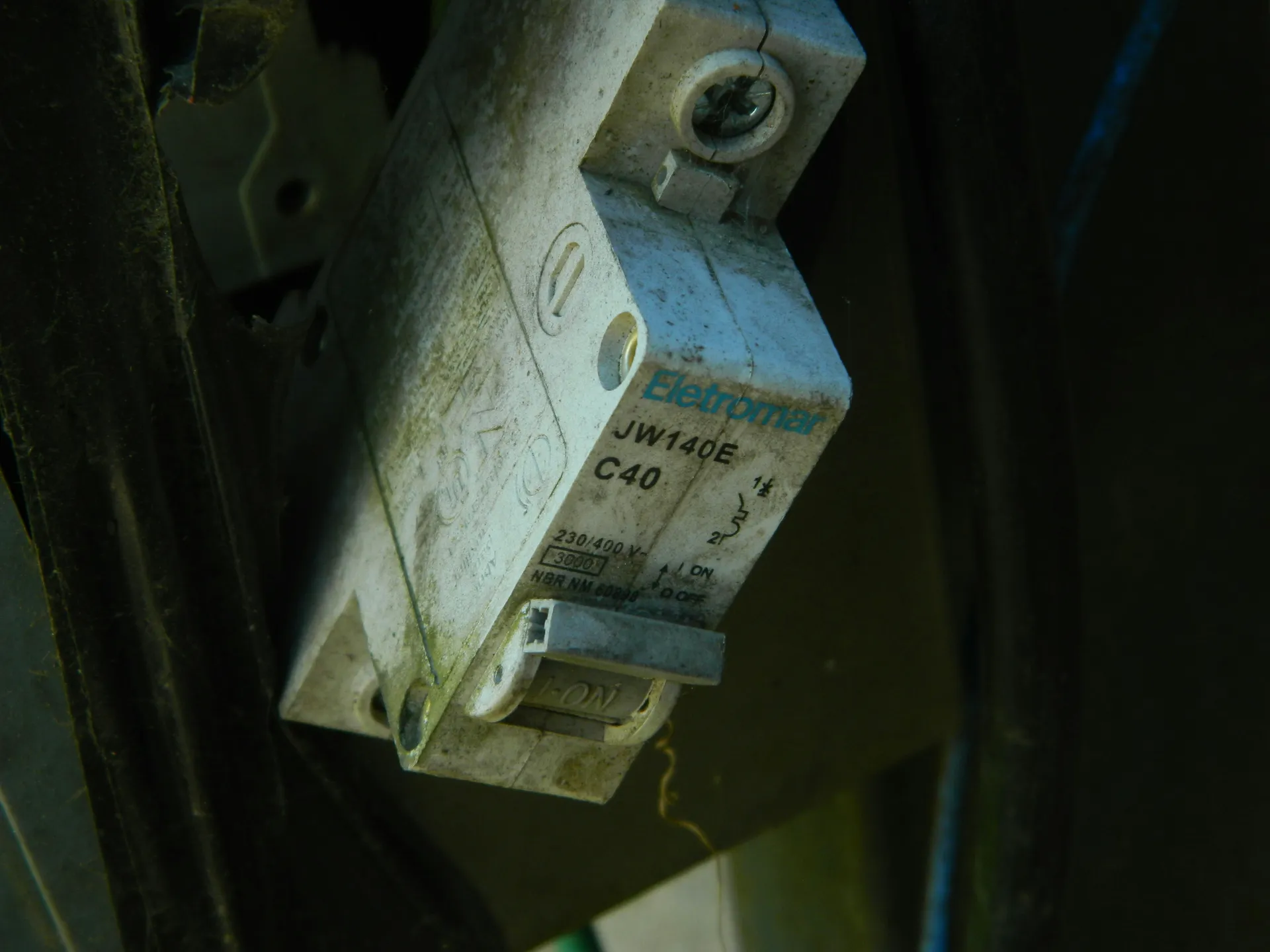Electrical Panel Repair: When to Call an Electrician & What It Costs
Your electrical panel (breaker box) is the most dangerous device in your home. Do not attempt to open, inspect, or repair it yourself. Any work performed by an unlicensed individual can lead to catastrophic fire, severe electrical shock, or death. This article is designed to help you identify danger from a safe distance so you can call a professional. Nothing more.
Related Electrical & HVAC Safety Resources
Electrical panel issues often occur alongside other home system problems. If you’re experiencing electrical issues, you may also need to address related HVAC system problems or heating system failures. For comprehensive home systems guidance, see our complete systems guide.
My name is Brian Mitchell. For the last 14 years as a licensed electrician, I haven’t just been repairing panels; I’ve been dealing with the aftermath of when they fail. Your home’s safety is not a negotiation. This guide is to help you recognize the symptoms, not to teach you the surgery. Your only job is to see the warning signs and call for certified help.
Key Takeaways
- Never attempt to repair your electrical panel yourself. It is extremely dangerous.
- A burning smell, buzzing sounds, a hot panel, or frequently tripping breakers are urgent signals to call a professional immediately.
- Professional repair costs can range from $100 for a single breaker replacement to over $4,000 for a full panel upgrade.
- Upgrading an outdated or undersized panel is a critical safety investment, not just an optional expense.
Warning Signs: When to Call an Electrician Immediately
Your electrical panel is the heart of your home’s electrical system. When it’s in distress, it sends out clear warning signals. Do not ignore them. If you observe any of the following, your next and only action should be to call a licensed electrician.
Critical Danger Signals Checklist
Common Electrical Panel Repairs and Professional Costs
Understanding the potential costs can help manage the situation. These are estimates for work performed by a qualified, licensed, and insured electrician. The price reflects expertise, liability, and absolute adherence to safety codes.
Typical Professional Repair Costs
| Professional Service | Estimated Cost Range | When It's Needed |
|---|---|---|
| Single Circuit Breaker Replacement | $100 - $250 | When a single breaker consistently trips without being overloaded, or fails to reset. This is the simplest professional fix. |
| Bus Bar Lug Tightening & Servicing | $200 - $400 | Often the cause of flickering lights or buzzing. Connections inside the panel can loosen over time, requiring professional torqueing and inspection. |
| Main Breaker Replacement | $300 - $800 | If the main breaker that controls all power to the house is faulty, hot, or tripping, it needs immediate replacement by a pro. |
| Full Panel Replacement / Upgrade | $1,500 - $4,000+ | Required for outdated fuse boxes, damaged panels, or when home electrical demand exceeds the panel's capacity. |
Note: The cost ranges above typically include the standard service call fee for work performed during normal business hours.
Repair vs. Upgrade: A Critical Decision for Your Home’s Safety
Sometimes, a simple repair isn’t the right answer. It’s like putting a small patch on a crumbling foundation. As a professional, my primary responsibility is to provide a long-term, safe solution, not a temporary fix.
When a Repair Might Be Sufficient
If you have a modern (less than 20 years old) circuit breaker panel and a single component fails—like one faulty breaker—a targeted repair is often appropriate. This assumes the rest of the panel and its wiring are in excellent condition and can handle your home’s electrical load.
When an Upgrade is Non-Negotiable
An upgrade isn’t an upsell; it’s a fundamental safety requirement. You must upgrade your panel if:
- You have an old fuse box: These are obsolete and not designed for modern electrical loads. They are a known fire hazard.
- Your panel is a known hazardous brand: Federal Pacific Electric (FPE) Stab-Lok and certain Zinsco or Sylvania panels are notorious for failing to trip, causing fires. They must be replaced on sight.
- Your panel shows signs of water damage or rust: Corrosion compromises every connection in the panel, creating a severe and unpredictable hazard.
- You’re adding major appliances: Installing an EV charger, central air conditioning, a hot tub, or a major kitchen appliance often requires more power than your old panel can safely provide. Planning a new AC installation? Use our AC replacement calculator to budget for both the unit and potential electrical upgrades.

A Note on Outdated Panels
An outdated or undersized electrical panel is not an inconvenience; it’s an active fire hazard waiting to happen. The cost of an upgrade is insignificant compared to the potential loss of property or life.
Your Only Task is to Make the Right Call
Your home’s electrical panel is its heart. Any sign of trouble is a serious health concern that demands a specialist. Your responsibility is not to diagnose or fix it. Your only task is to recognize the symptoms listed above and make the call to a licensed, insured electrician. It is the single most important decision you can make for the safety of your home and your family.
Frequently Asked Questions
Related Home Systems & Safety Resources
- Complete Systems Guide: Home Systems & Appliances: A Complete Guide to Costs, Maintenance & Lifespan
- HVAC Troubleshooting: Heat Not Working in House? A Step-by-Step Troubleshooting Guide
- Furnace Service: Furnace Service vs. Repair: A Tech’s Guide to Costs & What to Expect
- Heat Pump Issues: Heat Pump Troubleshooting: A DIY Guide Before You Call a Pro
- Commercial HVAC: Commercial HVAC Services: A Guide to Installation, Maintenance & Repair
- Building & Remodeling: Building & Remodeling: A Complete Guide to Costs & Planning
- Home Maintenance: Repairs & Maintenance: Your Complete Home Care Guide
- Outdoor Projects: Exterior & Outdoor Projects: A Complete Guide
